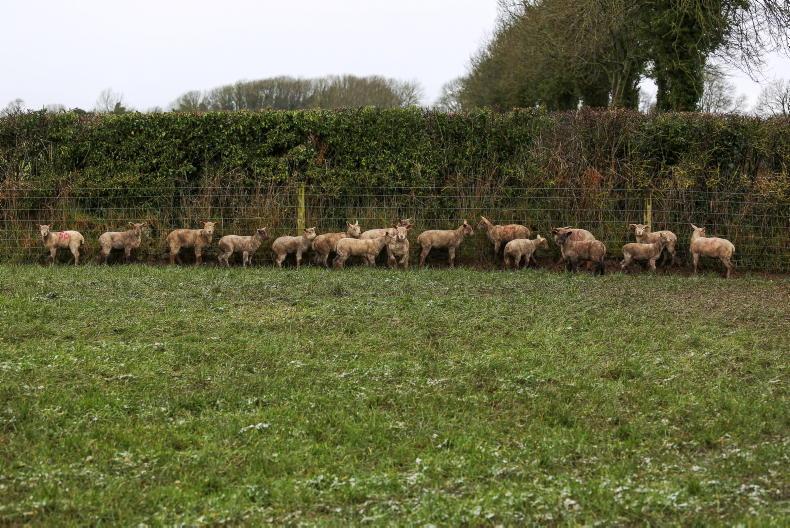Weather challenges
The torrential rainfall in recent days is creating even greater challenges for all farmers, be it lambing ewes or drafting hoggets, to stay on the right side of the clean livestock policy.
Underfoot conditions have deteriorated significantly and levels of grass utilisation have dipped.
With the forecast remaining variable it is important that the nutritional requirements of lactating ewes are satisfied. Circumstances vary greatly depending on lamb type, age of ewes/lambs etc.
In some instances ewes will be able to perform satisfactorily where grass supplies are positive and grass utilisation is relatively good.
Where this is not the case, concentrate supplementation will be required to bridge the nutritional gap and prevent issues. Feeding 0.5kg concentrates will generally suffice where grass supplies are good.
However where grass supplies or utilisation is particularly poor, or ewes are under excessive nutritional pressure (e.g. aged ewes, young ewes rearing multiple litters etc) then supplementation rates will need to be increased.
Ewes suckling triplet lambs or yearling hoggets rearing twin lambs should be monitored closely to ensure they are up to the task at hand.
Safeguards should also be put in place to reduce the risk of grass tetany.
The feeding of concentrates will help reduce the rate of digestion and absorption of magnesium, while feeding concentrates with the required concentration of magnesium has the added benefit of being able to see that all ewes have the best chance of defence. Where offering magnesium buckets, remember ewes need to be taking in magnesium in advance of facing associated stress triggers for disease.
Boluses offer a level of protection, while the addition of magnesium to water is of little use in current weather.
Mastitis
There are also more reports of ewes succumbing to mastitis. This is not surprising given the nutritional stress ewes are under and challenges in maintaining a hygienic environment where there is big pressure on housing space.
Treatment options and the chance of recovery depend on the type of mastitis present.
Characteristic symptoms associated with peracute or gangrenous mastitis are severe depression, ewes ceasing eating, dehydration and a swollen mammary gland that turns from warm at the start of the infection to a blue discoloration.
It is not uncommon for the mammary gland to rot and detach in serious cases.
Symptoms seen most often for acute mastitis include a warm, swollen, red gland that can possess normal or abnormal looking milk.
With this form of mastitis the gland is typically painful to touch and leads to ewes often walking lame in trying to avoid touching the gland with their leg.
Chronic mastitis and subclinical mastitis do not manifest in such a noticeable manner, and as such are hard to identify. The first sign is often lambs thriving poorly or sucking continuously.
It is important to note that this form can progress to clinical forms described above.
For all forms of mastitis, treatment typically includes administering a course of antibiotics. Affected animals should be segregated, and where multiple cases arise it is useful to collect a sample for laboratory analysis and to allow a targeted treatment programme.
Non-steroidal anti-inflammatory drugs with pain relieving action are also prescribed by some vets.
A decision on removing the lamb will depend on the severity of disease. As mentioned already, the best form of defence is ewe nutrition and hygiene.






 This is a subscriber-only article
This is a subscriber-only article











SHARING OPTIONS: